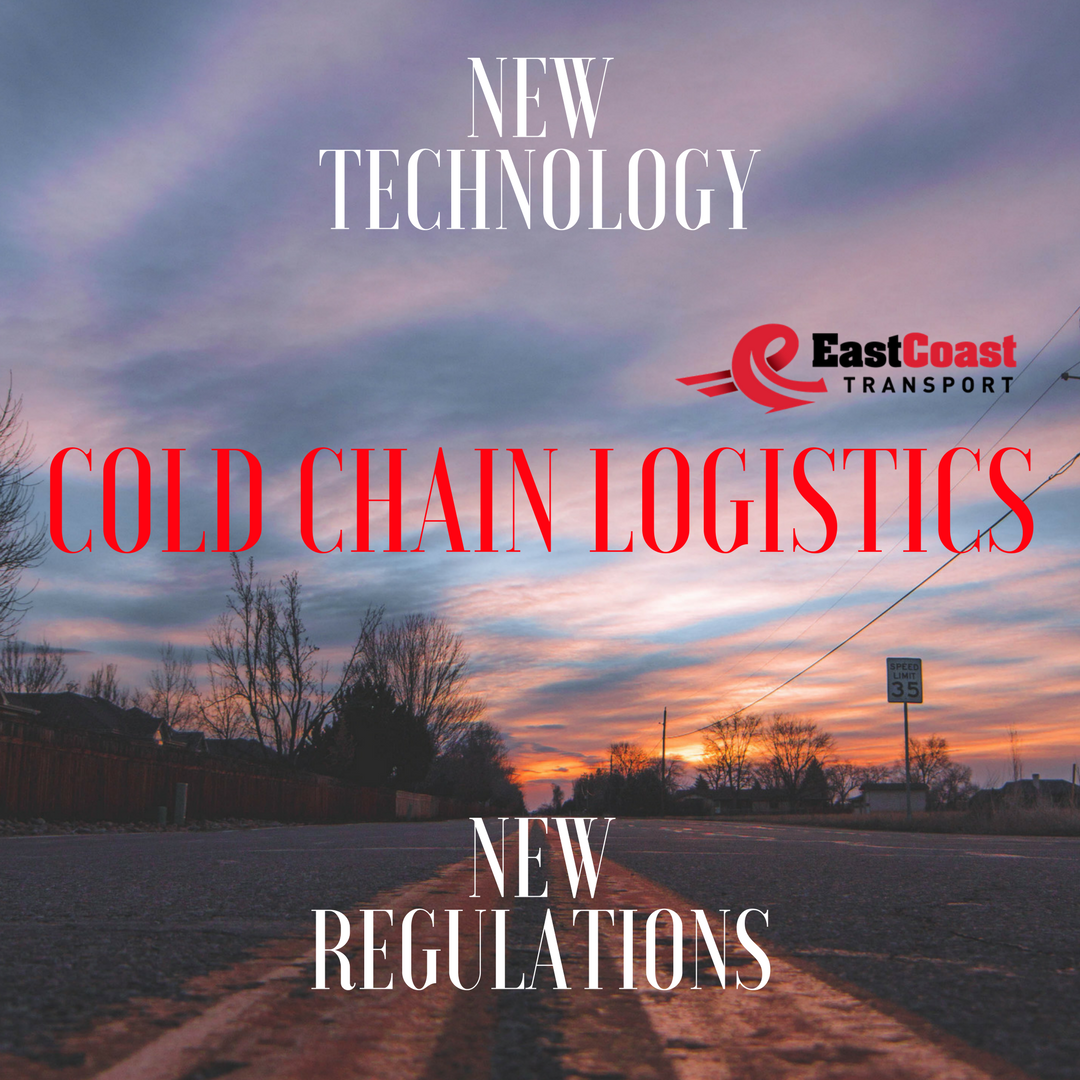The amount of logistical maneuvering involved in transporting frozen perished foods is endless, luckily with the advancements in technology third-party logistics companies can deliver the foods on time. The adoption of new technology for cold chain systems could reduce losses by 30%-50% for fresh and frozen food retailers, thereby increasing profits. Transporting refrigerated items is now a critical element of cold chain logistics, creating an industry projected to be greater than $14 billion a year by 2020. This represents an impressive growth for the industry as, until the turn of the 20th century, it was commonly understood that food and consumable commodities could not be transported beyond 50 miles without spoilage and health risks. Modern technology, integrated with the proper management processes, makes it much easier to prevent such problems and to spot them when they do occur. The essential task has the data to know whether the products on that truck have or have not remained within required temperature ranges. With the help of the digital disruption in logistics, logistics companies now use software and programs for cold-mapping and cold validation to help monitor the interior of the truck beds.
What Is Considered Cold Logistics?
For a range of goods labeled as perishables, mainly food (produces and frozen), their quality degrades exponentially with time since they maintain chemical reactions which rate can be almost wholly mitigated with lower temperatures. It takes time and coordination to efficiently move a shipment, and every delay and hand-off can have negative consequences, most notably if this cargo is perishable. To ensure that freight does not become damaged or compromised throughout this process, businesses in the pharmaceutical, medical and food industries are increasingly relying on the cold chain. If these refrigerated shipments should experience any unanticipated exposure to variant temperature levels, they run the risk of becoming spoiled and even harmful to consumers. For example, ice creams may not reach temperatures above -10 degrees Fahrenheit, if they do they will be considered spoiled and frozen meats, such as frozen turkeys, must maintain a temperature of 28 degrees Fahrenheit.
New Government Regulations for Transporting Cold Freight:
The Food Safety Modernization Act (FSMA), which was developed by the FDA over the last 11 years, established modern requirements for those bound by them to ensure the safety of food products that move through the supply chain. The companies required to comply include shippers who ship food within the United States, and those that ship to the United States from Canada and/or Mexico by motor or rail vehicle for further consumption or distribution in the United States.
The new rules have added 3PLs to the list of parties held liable in the supply chain since they are now considered an integral part of the cold supply chain. As a 3PL, ECT is responsible for vetting carriers and vehicles. For this reason, East Coast Transport makes sure that no vehicle is more than four years old and has been pre-qualified by the carriers. During the screening process, ECT also requires that drivers can maintain constant communication with their handlers. Shipment transportation vehicles and their equipment used to transport food, must not allow for spoilage or contamination during transport. Complying with the concept “during transport” is essential since it would require monitoring from origin to destination. That monitoring would also require container security devices (CSD) in the container or trailer to detect an unauthorized entry into the conveyance, which could indicate a loss of temperature needed for the contents, or an entry to add other food products or even counterfeit goods. Therefore, the conveyance must have the appropriate internal temperature hardware and CSDs to detect and notify the responsible party—the shipper, carrier or loader.
As a Third Party Logistics Companies, ECT, in the eye of the law, is the responsible party for the food’s movement would need to verify at loading the cargo and its quantity as well as ensure the use of an appropriate CSD to detect any unauthorized opening or temperature loss if carried in the refrigerated sealed container. The new transportation operations requirements state that the food must be carried in a completely enclosed container and have a stable shelf environment, or if the entire truck bed is not kept at the same temperature, the food must be safely stored at room temperature in a sealed container.
Technology in Transporting Cold Freight:
In reality, the cold supply chain is an actual science, an implemented technology, and a process. The logistics industry considers it a science since it requires the understanding of the chemical and biological processes linked with perishability. This caused it to evolve into a technology since it relies on physical means to ensure appropriate temperature conditions along the supply chain. The challenge cold chain logistics providers face is leveraging that technology to bring efficiency and optimization opportunities to customers’ businesses. Today, new programs and apps aid in tracking and maintaining records aids in the incremental changes in temperature and preparing for periods where the loads might have a potential climate change such as the change of custody process. The third party monitoring technology that ECT employs easily allows for the agent loading or verifying the cargo’s identification, the containers’ quantity, the containers’ ID number and other specific logistics data such as the manifest or bill of lading. These monitoring services track the location via GPS, the interior temperature, and troubleshooting caused by any unforeseen downtime. Using such monitoring services guarantees that large frozen shipments are correctly handled like the Butterball Turkeys transported before the Thanksgiving and Christmas holidays.

